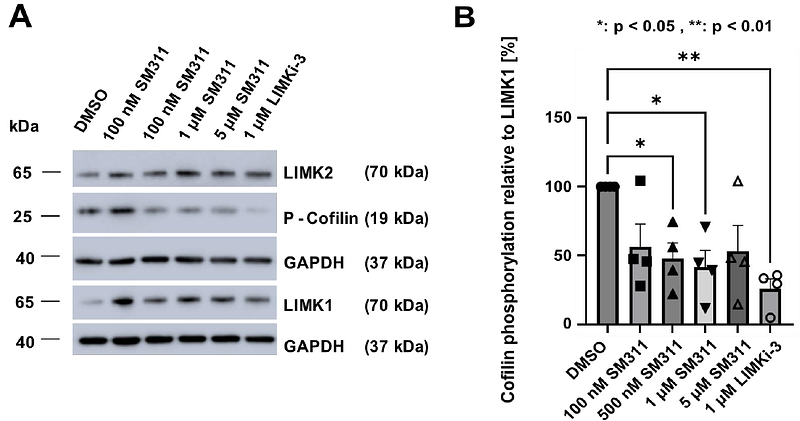Covalent targeting leads to the development of LIMK1 isoform-selective inhibitors

Covalent targeting leads to the development of LIMK1 isoform-selective inhibitors
Mandel, S.; Hanke, T.; Prendiville, N.; Baena-Nuevo, M.; Berger, L. M.; Farges, F.; Schwalm, M. P.; Berger, B. T.; Kraemer, A.; Elson, L.; Saraswati, H.; Azeez, K. R. A.; Dederer, V.; Mathea, S.; Corrionero, A.; Alfonso, P.; Keller, S.; Gstaiger, M.; Krause, D. S.; Mueller, S.; Roehm, S.; Knapp, S.
AbstractSelectivity for closely related isoforms of protein kinases is a major challenge in the design of drugs and chemical probes. Covalent targeting of unique cysteines is a potential strategy to achieve selectivity for highly conserved binding sites. Here, we used a pan-LIMK inhibitor to selectively probe LIMK1 over LIMK2 by targeting the LIMK1-specific cysteine C349 located in the glycine-rich loop region. Binding kinetics of both non-covalent and covalent LIMK inhibitors were investigated, and the fast on-rate and small size of type-I inhibitors were used in the design of a covalent LIMK1 inhibitor. The developed cell-active, isoform-selective LIMK1 inhibitor showed excellent proteome-wide selectivity in pull-down assays, enabling studies of LIMK1 isoform-selective functions in cellular model systems and providing a versatile chemical tool for studies of the LIMK signalling pathway.